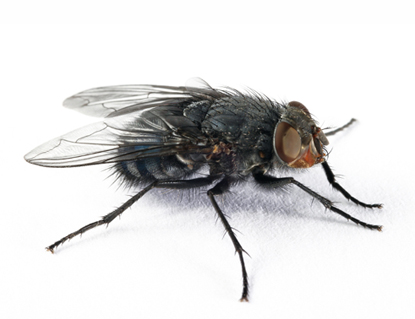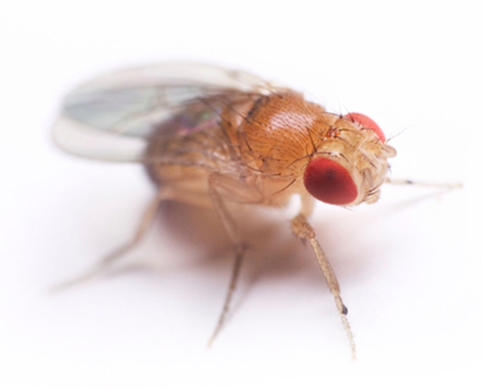IMPORTANCE
Other flies: Blow flies, sacropahagids, stable fly
Although a non-biter, the housefly which is a constant companion of man, serves as a mechanical carrier of many kinds of diseases. The housefly being a product of filth and poor sanitation, is also a potential intermediate host of certain internal parasitcs of livestock. Disease causing organisms, like those that cause diarrhea, stick to the hairy body and legs of flies as they crawl on contaminated materials. Therefore, flies can readily contaminate our foods as they wall over it. Even the excreta of theses filth loving insects contains different kinds of germs and other parasitic organisms.



House Fly (Musca domestica)
House flies are major carriers of disease and can infest all types of premises. They are attracted to all types of food, including human food, pet food, animal feed, food waste and even faeces. Seeing adult flies is usually the most common sign of activity and a potential problem. Larvae may also be seen as they crawl out of breeding material to pupate.
Key Facts
- Adult - pale and dark marks on its wings and resting 45 degree angle to their surface.
- Larval rest parallel to surface of the water.
- Egg is about 1mm long and has floats on its sides.
Fruit Fly (Drosophila species)
Fruit flies are commonly found infesting fruit or hovering around fermenting residues found in pubs, fruit orchards & vegetables plots and breweries.
Key Facts
- 3mm in length.
- Yellow - brown or mottled in colour.
- Bright red eyes.
- Abdomen hangs down in flight, which is slow.
- Tend to hover.


Bluebottle Fly (Calliphora vomitoria)
Bluebottle flies (also known as Blow fly) can often be seen hovering around dustbins. These scavengers are attracted to pet faeces and dead animals and as such are known carriers of disease. Their name originates from their iridescent colours that are similar to coloured bottles.
Key Facts
- Adult is 1/4" - 1/2" in length.
- Metallic blue colour.
- Larva - Similar to the house fly larva in all respects except size. 3/4" when mature.
- They take 7 - 12 days to mature.
Cluster Fly (Pollenia rudis)
Cluster flies are commonly found in quiet, undisturbed parts of your home, such as attics and wall voids. They require warm places to hibernate over winter. You may see a large group of cluster flies around a window, as they are attracted to the light on sunny winter days.
Key Facts
- 6 - 10mm in length.
- Metallic blue colour.
- Dark grey - olive thorax clothed with crinkled golden - brown hairs.
- Sluggish in flight.


Filter Fly (Psychodidae)
Filter flies are often associated with sewage beds, where larvae feed on sludge - like organic matter. They are also known by a variety of names; drain fly, sewage fly and moth fly are a few examples
Key Facts
- 2mm in length.
- Tan coloured body appears as grey.
- Wings densely covered in hair and held tent - like over the body when at rest.
Life Cycle
- Eggs hatch 1 - 6 days.
- Larvae 10 - 50 days to mature.
- Pupae 1 - 3 days to mature.